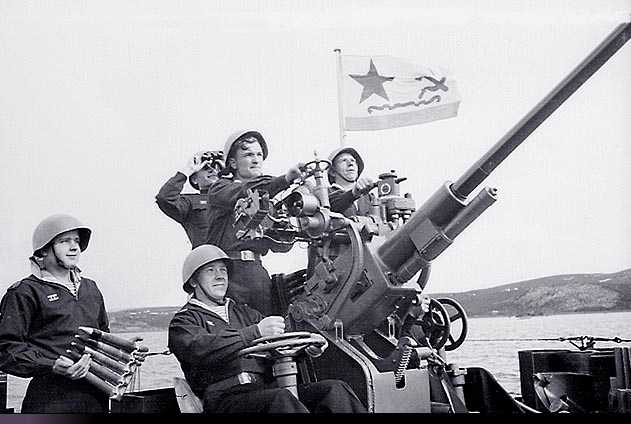The Russians had the same problem as some of the other almost major seapower countries. They did not possess the infrastructure to build capital ships. For the Russians, the armour producing plants were still available. The machinery/engineering factories were still available. It was in the production of large guns that the Russians were most lacking. They had been receiving assistance from the Italians with designing and producing the current crop of guns for the destroyers and cruisers they had so far built. To get large calibre guns for a battleship/s then they had to take the six plus years of work required to design and build both guns and turrets or find something they could buy off the shelf.
The Italians during the 1930's were updating and rebuilding the old WW1 battleships. Part of this was the removal of the central turret from each ship to give a total of four turrets available that could be refurbished to the same 12.6" standard as the turrets and guns on the Italian battleships, and sold to the Russians for fitting to a new battleship.

Laid down in 1937, at Nikolayev, the crew and last few items were hurried aboard as German Forces appeared at the outskirts of the city. Fighting off several air attacks the Rurik escaped the port and headed for Sevastopol. The Germans had dearly wanted to catch the ship in port and take it for German use in the Black Sea. The Rurik was the Queen of the Black Sea. Wherever the ship was it held the balance of seapower. The problem was it was not till 1943 that the Soviets could put enough aircraft in the air to dispute Airpower. Up until then, the German aircraft made the difference in the Black Sea. German seapower in the Black Sea centred around a couple of modern destroyers and some WW1 vintage ships that made up the Roumanian Navy. The main use of the ship was as a bombardment vessel anchoring the end of the Russian front line. It was during this usage that the Rurik was bombed several times taking bomb damage, none of which seriously damaged the ship.
The Rurik served as a front line vessel and command ship through to 1960, when the ship was reduced to an accommodation ship in Sevastopol. Eventually the ship was deleted from the navy list and broken up for scrap.
Rurik III, As Completed:
